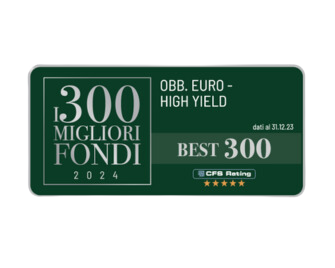Taking into consideration ESG factors, in order to pursue the environmental or social characteristics promoted by the Sub-fund, the company selects the investable universe through an approach based on exclusion and inclusion criteria. Specifically, investment in certain companies is excluded based on the following criteria:
– Norm-based screening;
– Controversy levels;
– Risk rating;
– Ethical exclusions.
Norm-based screening takes into account rules that refer to prohibited war material, exclusion lists are based on:
– the Italian Law n.220, 2021 and the Law Decree n.73, 2022;
– issuers domiciled in countries that do not comply with the Oslo Convention on Cluster Munitions (2008) and with the Ottawa Treaty on Anti-Personnel Mines (1999),
– Julius Baer group policies.
Such prohibition is also extended to any type of financial instrument issued by the issuers identified based on the above.
– predatory lending;
– the respect the principles of the United Nations Global Compact (UNGC);
– companies domiciled or listed in countries comprised in the following lists as well as securities issued by governments or governmental agencies in those countries:
— FATF black list available at https://www.fatf-gafi.org/publications/high-risk-and-other-monitored-jurisdictions/documents/call-for-action-february-2020.html;
— FATF grey list available at https://www.fatf-gafi.org/publications/high-risk-and-other-monitored-jurisdictions/documents/increased-monitoring-february-2020.html;
— EU High risk third countries available at https://ec.europa.eu/info/business-economy-euro/banking-and-finance/financial-supervision-and-risk-management/anti-money-laundering-and-counter-terrorist-financing/eu-policy-high-risk-third-countries_en are also excluded;
— Countries under financial embargo available at http://www.dt.mef.gov.it/it/attivita_istituzionali/prevenzione_reati_finanziari/embarghi_finanziari/
In addition to the above, the following criteria contribute to assess the sustainability risk based on the data available through the data provider adopted by Kairos from time to time:
– exclusion of companies having a severe controversy level;
– a maximum average ESG risk rating of the portfolio of 30 for issuers of equity and corporate bonds;
– exclusion of issuers domiciled or listed in countries with a severe risk rating, as well as securities issued by governments or governmental agencies in those countries.
In addition to the above criteria, companies directly engaged in and/or generating significant revenues from certain industry sectors are excluded from the investment universe.
In particular, issuers involved with Controversial Weapons, including nuclear weapons where they are domiciled in countries not adhering to the Treaty on the Non-Proliferation of Nuclear Weapons (NPT), are excluded.
In addition, the following sectors are excluded from the investment universe of the Sub-Fund:
– Tobacco producers;
– Thermal Coal, with 25% revenue threshold from thermal coal mining and exploration and electricity generation;
– Small arms, with a 10% revenue threshold.
In relation to inclusion criteria, companies taken into consideration will be those that better integrate ESG factors, consequently presenting lower risks with respect to these factors.
The inclusion of the environmental and/or social characteristics is performed by means of an internal model based on the sectorial materiality matrix in order to complement, where this is deemed appropriate, the analysis of the data provider. By way of example, the following parameters are considered:
Environmental section:
– emission reduction target trajectory;
– biodiversity policy;
– water intensity;
– identification of products, activities and services that have significant impacts on the environment;
– compliance with environmental regulation.
Social factors:
– diversity programmes;
– human capital development;
– employee turnover rate;
– bribery and corruption policy.
Governance section:
– the quality and integrity of directors and managers;
– the structure of the board of directors;
– shareholders’ rights;
– employee relations;
– directors and managers’ remuneration;
– financial statements, the administrative control and tax compliance.
Good governance practices are the basis for E/S integration.
The Sub-Fund considers the PAI by applying the strategies specified below:
– The following PAIs are integrated in the investment decision process: GHG Emissions (Total Scope 1 + 2 (tCO2eq), GHG Intensity of Investee Companies (Total Scope 1 + 2 (tCO2eq/EURm), Carbon footprint.
Concerning those indicators, in case of worsening or the occurrence of a negative event, the Management Company may engage directly or collectively the issuer. Where the situation does not improve and/or the issuer does not formally commit to improve it over a one-year period, the Management Company, taking into account the best interest of investors, may sell the position.
– Exclusion criteria:
— Violations of UN Global Compact Principles and Organisation for Economic Cooperation and Development (OECD) Guidelines for Multinational enterprises, Lack of processes and compliance mechanisms to monitor compliance with UN Global Compact principles and OECD Guidelines for Multinational Enterprises.
– Controversial Weapons.
No investment is performed if the company directly engages in and/or generates significant revenues from sectors in the above exclusion list.

